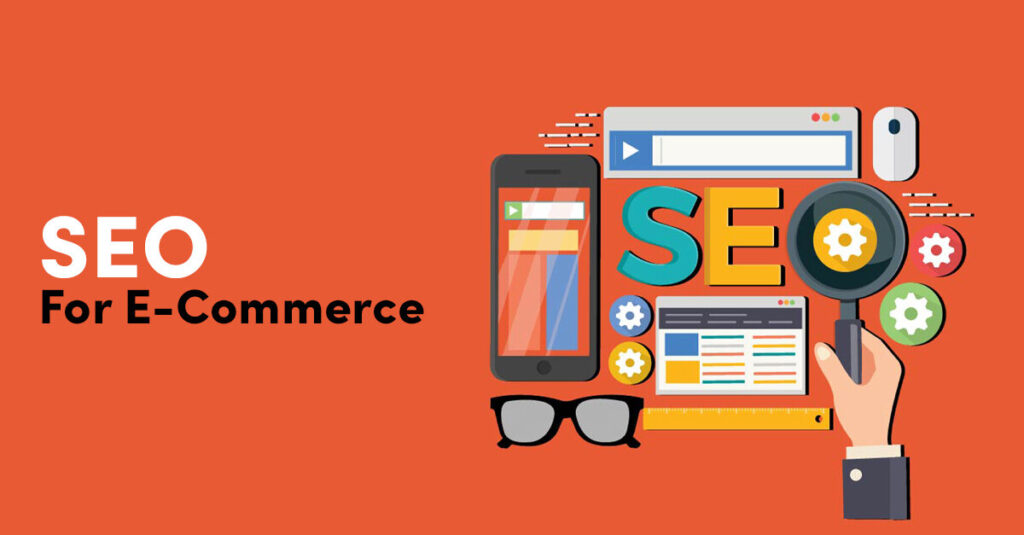Traffic is, without a doubt, the lifeblood of any online business. And so because of that, traffic plays the most crucial role in an online business. However, the question remains: Can e-commerce SEO help to drive traffic to your site?
The answer is a definite YES. However, organic search is the most common source of web traffic. This means that businesses that use SEO for their E-commerce stores can enjoy up to 14.6% conversion rates, unlike the 1.7% from outbound marketing.
In fact, SEO is not only useful but a crucial element of the functioning of search engines. Google trends, for instance, registers more than 5.6 billion searches in a single day. This means that it will not be easily found if your online store is not properly optimized for SEO.
While digital marketing and paid advertisement assist in bringing in traffic, relying on them is costly and not sustainable. When done right, SEO can get your website on the first page of SERPs, and you can double or even 10x your organic traffic and profits.

4 Key Components in an E-commerce SEO Strategy
There are several important factors in an e-commerce SEO strategy. If done properly, these components will help ensure that your online store is ranked higher on SERPs. As a result of ranking higher, your store will revive lots of organic traffic, thus boosting sales.
Here are the main areas that every E-commerce business should pay attention to in order to improve their SEO performance. In fact, you can use them as part of your e-commerce SEO checklist.
1. Content Optimization
Any SEO strategy is built around content; it is the primary focus of any optimization process. Correct use of keywords and related search terms is crucial in order to ensure that the search engine indexes your products and services. Here’s what to focus on:
- Keywords: Use target keywords where possible across your website, including in URLs, header tags, product descriptions, and blog posts. This is important in order to enable search engines to understand what your content is all about.
- Meta Information: Meta titles and descriptions are the first thing users see when your page appears in search engine results. Choosing proper and SEO-friendly meta titles and descriptions will elevate your CTR.
- Product Pages and Blogs: It should also be incorporated into product descriptions, category pages, and informational blogs. Well-written content will attract visitors, keep them interested, and increase sales and fewer bounces.
Optimizing these areas for the keywords can enhance your website’s search engine results and allow you to rank for the search terms that potential customers are using to look for similar products.
2. Technical SEO Setup
There is also a technical aspect of your e-commerce website that must not be ignored. This is simply because these technical elements enable search engines to crawl and index all your Web page(s).
Here are some key technical elements to optimize:
- HTTPS: Make sure your website uses HTTPS, which indicates to both the user and the search engine that your site is secure.
- Mobile Friendliness: Mobile-friendly feature optimization is necessary since over 60% of searches now use mobile devices. A design that is friendly to the devices will assist in increasing your ranks and usability.
- Page Speed: A site that takes a short time to load is essential. Google has stated that a one-second delay in page load time can cost up to 7% of conversions. Some of the areas that can be improved using Google Page Speed Insights.
- XML Sitemap: An XML sitemap is a search engine map that helps define the site’s most important pages. This helps to ensure that all the pages that will be targeted are indexed.
- Indexation: Ensure that all your site’s pages are indexed in the search engines. If the pages are not indexed, they will not be visible in the search results, and all other SEO work is pointless.
Optimizing these technical sides aids in ranking higher on the website and also enhances overall functionality, which keeps more visitors engaged and converted to your site.
3. User Experience (UX)
Apart from link building, user experience is one of the top-ranking metrics that Google uses to rank websites. Google utilizes several user parameters, including time on page, bounce rate, and conversion rate, to determine whether your site is useful to the users. The more positive the user experience, the higher you will probably rank.
So, what should you focus on? Well, let’s have a look:
- Site Navigation: Make sure your site is easy to navigate with good categories and menus that are easy to follow. Customers should be able to locate products easily without feeling their way through the store.
- Page Load Time: Another reason why websites have high bounce rates is that they take a long time to load because users get impatient whenever this happens. Google likes sites that are slow to load because this makes the users’ experience a better one.
- Trust and Credibility: Google’s algorithm considers your site’s credibility. Accuracy of the information provided, easy-to-use layouts and designs, and the use of security measures such as SSL certificates enhance confidence.
Since 75% of users do not scroll past the first page of search results, enhancing these UX components can directly affect your site’s exposure and possibly sales.
4. Link Building
Link building remains to be one of the most effective ways of raising the credibility of your site. That is, internal and external links are important in improving your E-commerce SEO. Here’s how to approach it:
- Internal Linking: Connect two or more pages on your site and, in so doing, help the search engines understand the layout and importance of your website. For instance, clicking from what has been written on a blog to one of the product pages always enhances user experience and, hence, the time spent on the site.
- External Links: Linking back from other sites that are well-recognized by Google makes the site more credible to the search engine. The more quality backlinks you have, the more authoritative your site is.
- Being a Cited Resource: Another way to ensure you will gain authority is to get backlinks from other websites or industry publications. This can help you gain more awareness from your link and improve your rank on the SERPs as well.
Through link building, you inform search engines that your website is credible and authoritative. These are two factors that are critical in determining ranking.
Conclusion
As mentioned earlier, 75% of users do not go beyond the first page of search results; therefore, the above four elements are vital to learning. This is because every factor is crucial in making your e-commerce store rank higher on the search engine, get more organic traffic, and therefore increase the conversion rate.
Thus, you should enhance the E-commerce SEO approach to the following pillars, which will help you make your site more noticeable and lay the groundwork for its sustainable development. In a competitive online environment, E-commerce SEO is not a luxury but a necessity for success in 2024 and beyond.

0 Comments